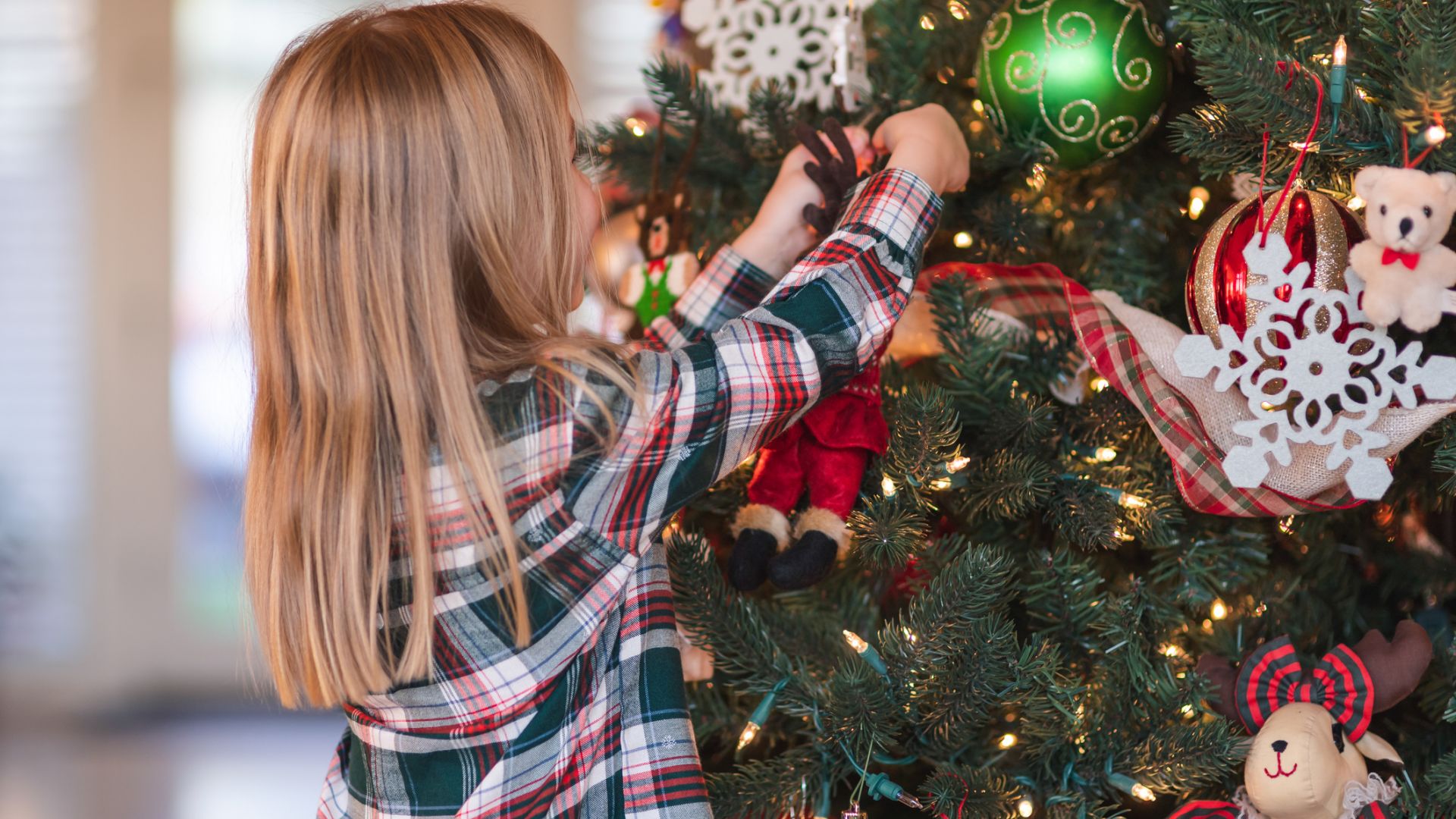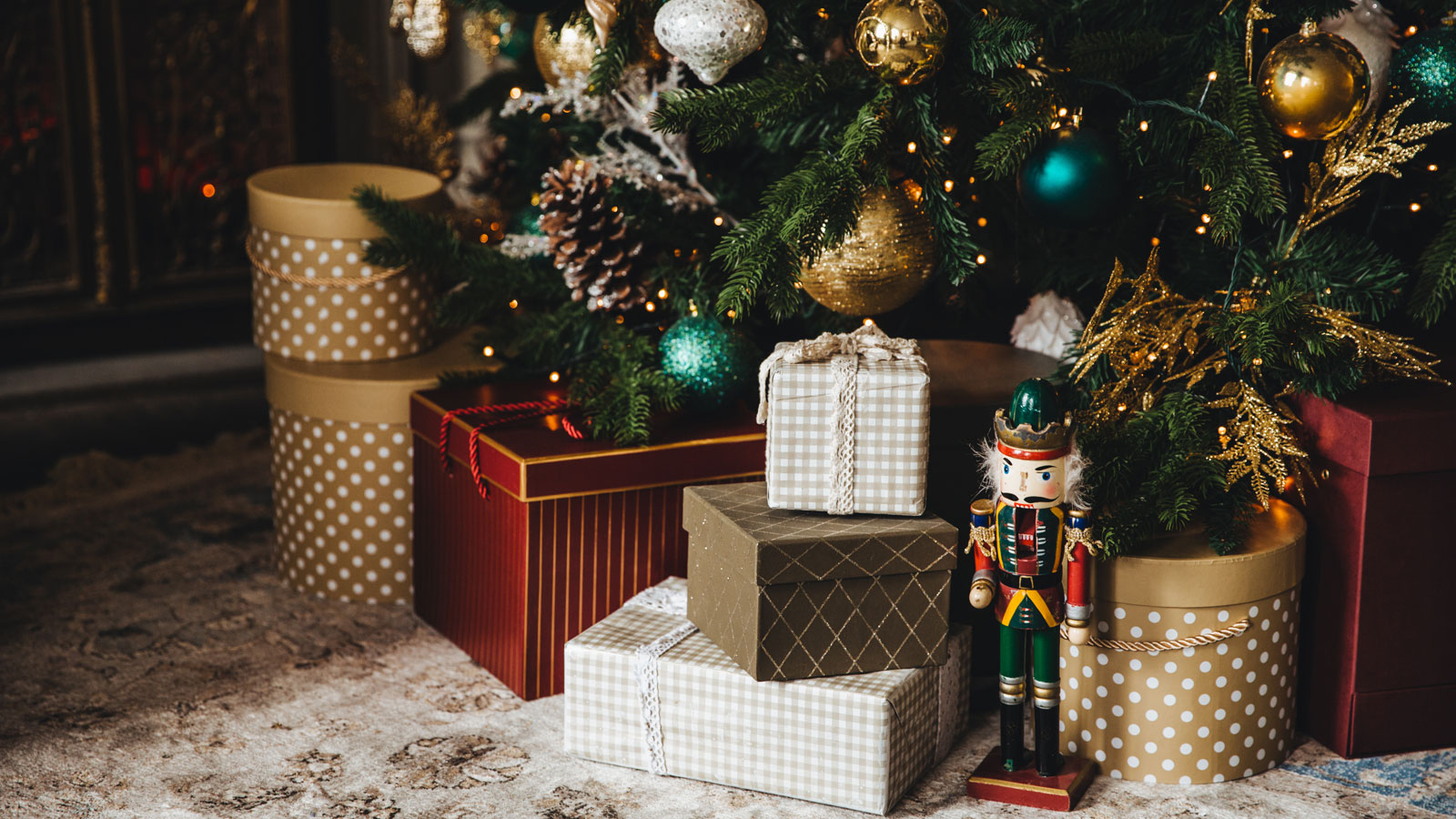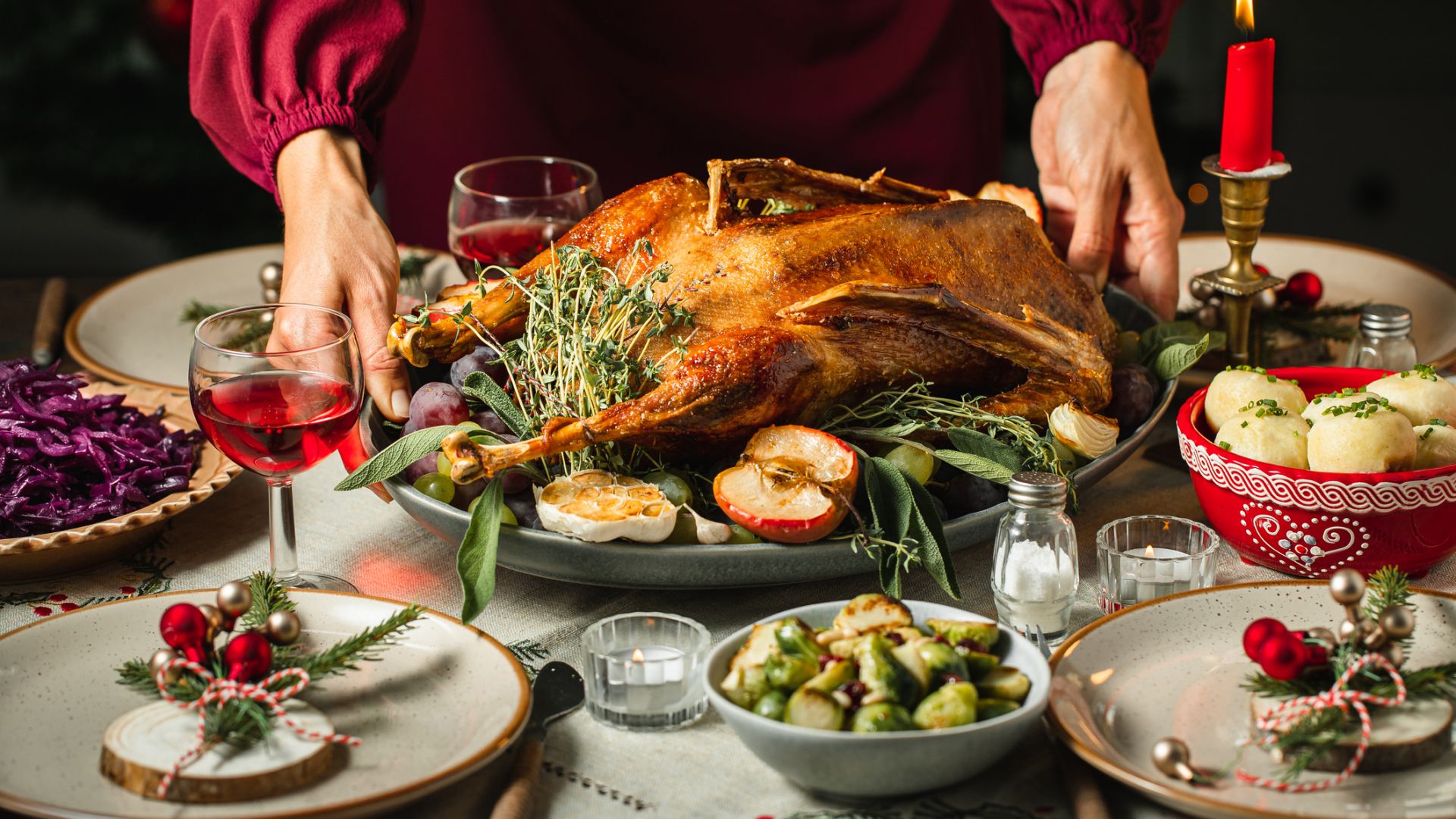Cities & Culture
Christmas Eve: Christmas tree, Christ Child and Father Christmas
Christmas is a feeling. Christmas is memory and anticipation in equal measure: In Germany, this feeling is celebrated for over four weeks: Advent. For many people, however, Christmas Eve is the most beautiful day of the year. Traditionally, the Christmas tree is put up and decorated on this day, under which the presents can be found in the afternoon or evening.
Christmas Eve in Germany is a highlight in the annual calendar for many people, warming hearts with a unique blend of tradition and festive magic. This special day is celebrated not only as a religious festival, but also as an occasion to celebrate the love, community and values that make Christmas so unique. From the sparkling Christmas tree decorations to the delicious Christmas dinner, Christmas Eve fills the country with an irresistible atmosphere of warmth and togetherness.
Glittering Christmas time: The Christmas tree is the most beautiful tree
 Girl hangs ornaments on the Christmas tree
©gettyimages (FatCamera)
Girl hangs ornaments on the Christmas tree
©gettyimages (FatCamera)
"Am Weihnachtsbaume die Lichter brennen, wie glänzt er festlich, lieb und mild...", goes a popular German Christmas carol. Indeed, the Christmas tree is at the centre of Christmas celebrations almost everywhere. In almost all homes, a richly decorated Christmas tree is set up, around which the presents are later presented. Many families buy the tree together at special market stalls or even cut it themselves in designated forest areas. Many families have inherited Christmas decorations with which the tree is lavishly decorated. Everything that shines and glitters, such as Christmas balls, bells, angel figures or shimmering tinsel, is popular. In Germany, it is still customary to put up real trees and decorate them with real candles. In the evening, the presents brought by the Christ Child or Father Christmas are traditionally placed under the Christmas tree. Then the presents are distributed.
In the south of Germany, especially in Bavaria and Baden-Württemberg, the custom is "Christbaumloben". People go from house to house praising the beauty of their neighbour's Christmas tree. As a thank-you for the compliments, they receive a small gift, such as a bottle of schnapps.
Christmas Eve: Christ Child or Father Christmas?
 Decorated Christmas tree and many presents underneath. Christmas tree with lots of colorful decorations
©AdobeStock (VK Studio)
Decorated Christmas tree and many presents underneath. Christmas tree with lots of colorful decorations
©AdobeStock (VK Studio)
Christ Child or Father Christmas? The question of which of the two brings the presents is answered differently in the regions of Germany. Although Father Christmas with the curly beard is the more recent invention, he has become established and is mainly employed in the north of the country. The Christ Child with the golden curly hair, on the other hand, is more at home in the south. In any case, the children have respect for both, because only the good ones receive plenty of presents, so the parents say. After the presents on 24 December, many families traditionally go to church for Christmas Mass, even though they might not otherwise be seen at the service often. This midnight mass is usually celebrated in a very atmospheric way. The bells ring for the church service and the whole family makes its way there to meet up with other families, neighbours and friends. In the church, the children are particularly interested in the nativity scene, which tells the story of the birth of Christ from the Christmas story with lovingly carved figures.
Festive delights: Christmas dinner from goose to potato salad
 Woman sets table for Christmas dinner with roast goose
©gettyimages (alvarez)
Woman sets table for Christmas dinner with roast goose
©gettyimages (alvarez)
Christmas Eve dinner is one of the most traditional and hearty meals of the year. On Christmas Eve, many families serve potato salad with sausages. This tradition is particularly popular in Thuringia and Saxony. On the following Christmas days, roast goose with potato dumplings and red cabbage or carp are served. In Schleswig-Holstein, people prefer duck. Regardless of the dish chosen, Christmas dinner is always a time of fellowship and joy. It is a time of coming together. Christmas dinner is therefore not only a culinary experience, but an expression of love and connection that reflects the festive nature of this time of year.
Learn more on our campaign page.
Winter and Christmas
Close your eyes and let yourself be acoustically enchanted by the diverse impressions on your journey through Germany!
Intro with music:
“Experience Germany – A Surprising Journey of Discovery”
INTRO
In the run-up to Christmas, the smell of roasted almonds, gingerbread and mulled wine is found everywhere in Germany. Each city has its own Christmas market. One of the most famous is the Nuremberg Christkindlesmarkt and it is opened by the Christ Child himself, says City Councilor Dr. Michael Fraas.
OST Dr. Michael Fraas, Nuremberg, Bavaria
Man: It is the Friday of the first Advent weekend, it is dark at the main market. All the lights will be turned off, including those in surrounding buildings and stalls. The square is dark. Then a big spotlight comes on, directed at the balcony of the Frauenkirche, and suddenly the Christ Child is standing there in his golden robe and crown and says: “The Christ Child invites you to his market and everyone is welcome.”
And the oldest German Christmas market is actually the Striezelmarkt in Dresden, dating back to 1434. Like Nuremberg with its gingerbread, Dresden’s Christmas market is also associated with a famous pastry, reports Veronika Hiebl of Tourismus Marketing Gesellschaft Sachsen.
OST Veronika Hiebl, Dresden, Saxony
Woman: The Dresden Striezelmarkt and the Dresden Christstollen share a common history, and this history continues to this day, as the Dresden Striezelmarkt owes its name to the traditional pastry originally known as Striezel.
But when it comes to the capital city of Christmas markets, Christian Tänzler of Visit Berlin clearly sees this as the German capital, with more than 50 themed markets ranging from royal to urban.
OST Christian Tänzler, Visit Berlin
Man: We have a Christmas market for dog lovers, for example. Of course, we also have nice things like a children’s Christmas market, a winter camp for the LGBTQI community, we have an old railroad, which is a bit magical and atmospheric in an old locomotive shed. And, what is very, very important in Berlin is the issue of sustainability. We have an organic market at Kollwitz Square. Therefore, everyone can find what they are looking for.
The 17 Christmas markets in “Holy Hamburg” also range from the cheeky and frivolous “Santa Pauli” on the Reeperbahn to maritime Christmas flair, explains Guido Neumann from Hamburg Tourismus.
OST Guido Neumann, Hamburg Tourismus
Man: We have a Christmas market in the Hafencity right on the waterfront, overlooking the harbor, a Christmas market around the Binnenalster lake or there are two Christmas markets on the waterways, on the canals. In addition, there are many things that take place on ships: Christmas fairy tales on steamboats on the Alster river, boat trips and Christmas-themed cruises on the Elbe through the brightly lit harbor.
Grog instead of mulled wine, fish sandwiches instead of the usual bratwurst. But stollen, cookies, Santa Claus, Christmas carols and Advent calendars are also part of the Advent season. According to the Guinness Book of Records, the largest Advent calendar house in the world is located in the Black Forest, according to Oliver Gerhard, spokesman for the town of Gengenbach.
OST Oliver Gelhardt, Gengenbach Advent calendar, Baden-Württemberg
Man: The town hall happens to have 24 windows, and this town hall is illuminated and becomes a giant Advent calendar, and every evening at 6 pm a window opens. The special thing about the Gengenbach Advent calendar is that great artists are always included. We already had paintings by Chagall, by Tomi Ungerer … There is always great art in these windows.
If you want to see the German cities with the most beautiful Christmas decorations through a window, you can book river cruises to romantic winter destinations on the Rhine, Danube or Elbe. From November to March, so-called winter punting trips are also offered on the Spreewald, says Patrick Kastner from Reiseland Brandenburg.
OST Patrick Kastner, Spreewald, Brandenburg
Man: These are unique Winter moments to enjoy snuggled up in a warm wool blanket with mulled wine in hand. You can listen dreamily to stories of the bargemen, who stand at the end and steer the ship almost like a gondola in Venice.
If you travel to Germany’s northernmost tip, you can find fir trees in Freest and on the island of Rügen, which are decorated with apples, potatoes and rose hips instead of baubles, angels and tinsel, because that’s where Lütten Christmas is celebrated, the Christmas festival of animals based on a book by Hans Fallada, explains Kathrin Hackbarth from Tourismusverband Mecklenburg-Vorpommern.
OST Kathrin Hackbarth, Mecklenburg-West Pomerania: Lütten Christmas
Woman: The animals also find it difficult to find the appropriate food: there is snow on the Baltic coast in some places. So the idea came up to create edible ornaments. These can be titmouse rings, carrots, clay pots filled with lard and seeds or fruit, which are then laid out for the animals.
A small joy for the forest animals in the snow. And the snow also makes skiers happy, especially in the Bavarian Alps and the Black Forest. But there are also lifts on the Wasserkuppe mountain in Hesse, on the Fichtelberg in Saxony and on the Erbeskopf in the Palatinate. And Andreas Lehmberg from the Harzer Tourismusverband recommends winter vacations in Lower Saxony and Saxony-Anhalt.
OST Andreas Lehmberg, Harz ski resorts
Man: There are large ski resorts for alpine skiing in Braunlage on the Wurmberg or the Matthias-Schmidt-Berg in Sankt Andreasberg, and in the ski resort on the Bocksberg mountain in Hahnenklee. Those are the big ones. In addition to alpine skiing, cross-country skiing in the Harz Mountains is of course very exciting, where we have over 500 km of cross-country trails. And also, the Harz Mountains are very important when it comes to tobogganing, because from the north we are the first mountain range where you can go tobogganing on a longer stretch. That is why we have a dense network of winter hiking trails prepared.
If you want to get really active this winter, you’ll find plenty of sporting highlights at the Olympic base in Oberhof in the Thuringian Forest, reveals Thuringian sports journalist Katja Bauroth.
OST Katja Bauroth, Oberhof, Thuringia
Woman: There is the ski jump. Walking up and down the steps is great for the leg muscles. You will meet international athletes in the biathlon stadium on the Grenzadler. It is also possible for tourists there to have a go at the targets themselves. The cross-country ski hall allows year-round cross-country skiing and you can also meet the international crème de la crème of Nordic skiing there.
Well then, have fun in Germany in the wintertime!
OUTRO